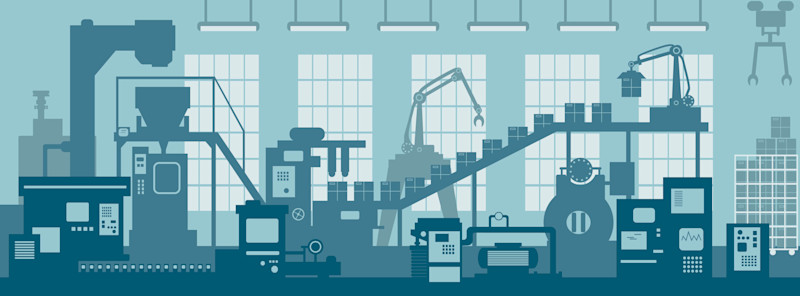TECHNOLOGY
Where Does Additive Manufacturing Add Value to the End User?
There are three scenarios where no other manufacturing process or capability can beat additive: point of use and point of manufacturing; optimized fluid path; and utilizing materials that are difficult for subtractive or joining processes. This is translating to real-world applications. The defense sector is experimenting with additive machines on aircraft carriers and forward-operating bases. Products that convey gases are reaping the capability benefits of additive processes and computational designs that could not be solved in the past. End products are shifting to bimetal applications that will drive resilient, cost-effective designs. Still, not all of these have an easy going. Manufacturing at the world’s end requires an ecosystem of data and innovation. Improving gas paths requires cutting computation capabilities. New metal combinations will need certifications. Either way, additive manufacturing is revolutionizing the world, one case at a time.
INTELLIGENCE
Mainstream Interest in AI Will Benefit Manufacturing
Artificial intelligence has hit mainstream audiences with the recent release of a new conversational AI technology called ChatGPT. Produced by OpenAI, this online service took just five days to reach a million users and has crossed 100 million in two months. For comparison, Netflix, released in 1999, took 3.5 years to hit a million users, while Facebook, released in 2004, took 10 months.
Popular innovations like these can capture the imagination of the public, who begins to understand the technology’s inner workings and how it can be applied to other areas. Could this accelerate the adoption of AI in manufacturing? It’s likely, considering how data-rich most manufacturing industries are. An acceleration in the application of AI will likely impact manufacturing processes such as predictive maintenance, quality control, process optimization, and robotics as new AI innovations continue to infiltrate the general population’s vernacular.
SMARTFORCE
Expanding Additive Manufacturing Education and Apprenticeship Initiatives
National and industry-wide initiatives to develop and expand additive manufacturing education and apprenticeship programs are growing. Manufacturers can depend on e-learning classes in additive manufacturing (AM) from ToolingU/SME to skill up their workforce, especially where hands-on programs do not currently exist at their local schools. America Makes, the Manufacturing USA Institute for AM, has developed educator training and curriculums for primary, secondary, and post-secondary education.Additionally, America Makes and NIMS have developed industry-recognized AM standards and credentials across three specific AM duty areas, including AM designer, AM machine operator, and AM materials technician. Project MFG has launched new integrated manufacturing competitions, including in AM, to expand AM training and education in the defense industrial base. A new AM apprenticeship initiative is underway in Florida with the Florida Space Coast Consortium and additional industry stakeholders, including EOS, Morf3D, and others. For more information, visit tooling.com, americamakes.us, nims-skills.org/additive-smart, and projectmfg.com.
ADVOCACY
CHIPS and Science Act Funding Update
The bipartisan CHIPS and Science Act became law last August. The act invests $280 billion over ten years to bolster the U.S. semiconductor supply chain and promote R&D of advanced technologies in the United States. It includes $39 billion in manufacturing incentives to build, expand, or modernize domestic facilities and equipment for semiconductor fabrication, assembly, testing, advanced packaging, or R&D, plus a 25% advanced manufacturing investment tax credit for investments in semiconductor manufacturing. The credit covers manufacturing equipment and the construction of semiconductor manufacturing facilities as well as incentives for manufacturing the specialized tooling equipment required in the semiconductor manufacturing process.
The U.S. Department of Commerce’s CHIPS Program Office released the application for the first funding opportunity at the end of February. Guidance on the tax credit is forthcoming. Interested parties should register at SAM.gov to receive a Unique Entry Identifier necessary to complete an application. Visit CHIPS.gov to review the CHIPS implementation strategy and sign up for the newsletter.
INTERNATIONAL
‘Growing’ Markets: Mexico, India Show Promise for Additive
Additive manufacturing (AM) has been around since the early 1980s but has only recently made inroads into industrial production processes. Despite remaining challenges (ROI, lack of standards, skills), the future of AM is very optimistic. Medical, aerospace, and automotive are all adopters of the technology. Medical is outpacing other verticals in AM use due to the amount of customization required and the high margins achieved. It is estimated that in the next seven years, the global AM market in medical will grow to more than $5 billion, equaling aerospace and automotive adoption combined. But where? The United States, Europe, and China will remain the main consumers, but guess who else is up there – India and Mexico. Medical investment in both countries is growing by leaps and bounds, and our staff in Chennai and Monterrey are paying close attention, so stay tuned.






